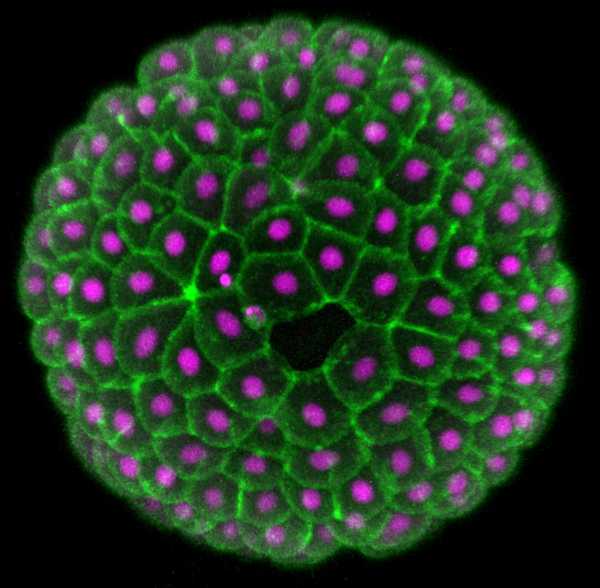Data from: Lineage tracing shows that cell size asymmetries predict the dorsoventral axis in the sea star embryo
Data from: Lineage tracing shows that cell size asymmetries predict the dorsoventral axis in the sea star embryo
About this collection
- Extent
-
1 digital object.
- Cite This Work
-
Barone, Vanessa; Byrne, Maria; Lyons, Deirdre C. (2022). Data from: Lineage tracing shows that cell size asymmetries predict the dorsoventral axis in the sea star embryo. UC San Diego Library Digital Collections. https://doi.org/10.6075/J02F7NNK
- Description
-
BACKGROUND: Cell size asymmetries are often linked to cell fate decisions, due to cell volumes and cell fate determinants being unequally partitioned during asymmetric cell divisions. A clear example is found in the sea urchin embryo, where a characteristic and obvious unequal 4th cleavage generates micromeres, which are necessary for mesendoderm cell fate specification. Unlike sea urchin development, sea star development is generally thought to have only equal cleavage. However, subtle cell size asymmetries can be observed in sea star embryos; whether those cell size asymmetries are consistently produced during sea star development and if they are involved in cell fate decisions remains unknown.
RESULTS: Using confocal live imaging of early embryos we quantified cell size asymmetries in 16-cell stage embryos of two sea star species, Patiria miniata and Patiriella regularis. Using photoconversion to perform lineage tracing, we find that the position of the smallest cells of P. miniata embryos is biased toward anterior ventral tissues. However, both blastomere dissociation and mechanical removal of one small cell do not prevent dorsoventral (DV) axis formation, suggesting that embryos compensate for the loss of those cells and asymmetric partitioning of maternal determinants is not strictly necessary for DV patterning. Finally, we show that manipulating cell size to introduce artificial cell size asymmetries is not sufficient to direct the positioning of the future DV axis in P. miniata embryos.
CONCLUSIONS: Our results show that although cell size asymmetries are consistently produced during sea star early cleavage and are predictive of the DV axis, they are not necessary to instruct DV axis formation. - Date Collected
- 2018 to 2022
- Date Issued
- 2022
- Authors
- Principal Investigator
- Funding
-
This work was supported by the Australian Government [Endeavour Postdoctoral Fellowship to V.B.]; the Human Frontier Science Program [LT000070/2019 to V.B.]; and by start up funds from Scripps Institution of Oceanography to D.C.L.
- Geographics
- Scientific Names
- Topics
Formats
View formats within this collection
- Language
- English
- Identifier
-
Identifier: Vanessa Barone: https://orcid.org/0000-0003-2676-3367
- Related Resource
- Barone, V., Byrne, M. & Lyons, D.C. Lineage tracing shows that cell size asymmetries predict the dorsoventral axis in the sea star embryo. BMC Biol 20, 179 (2022). https://doi.org/10.1186/s12915-022-01359-3
Primary associated publication
 Library Digital Collections
Library Digital Collections
